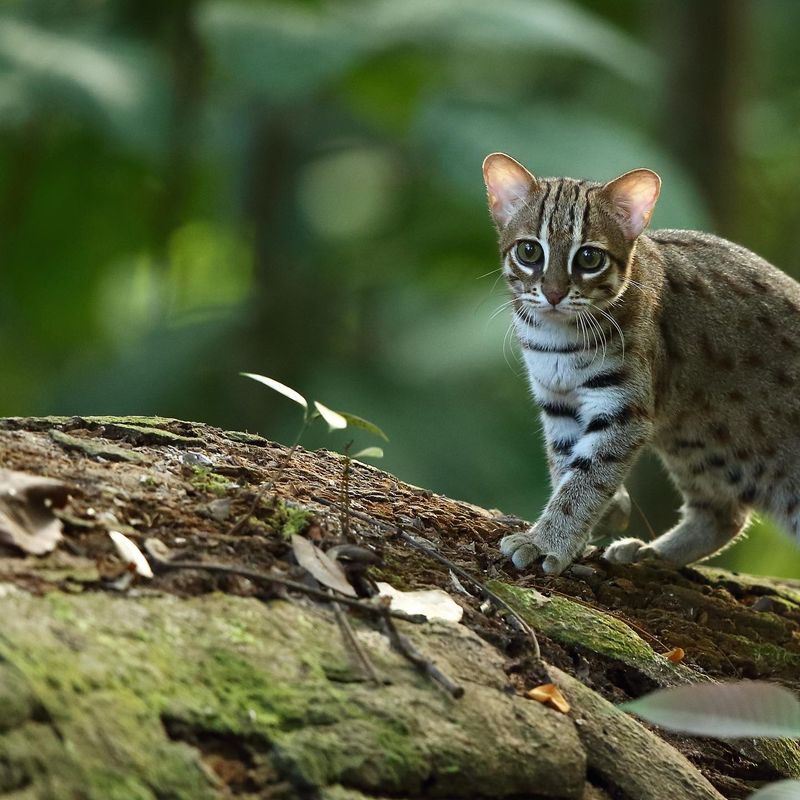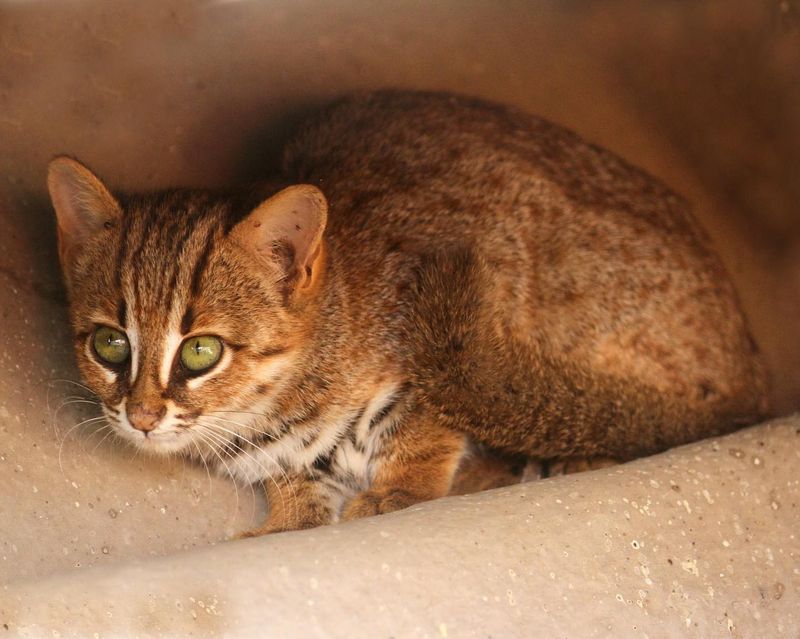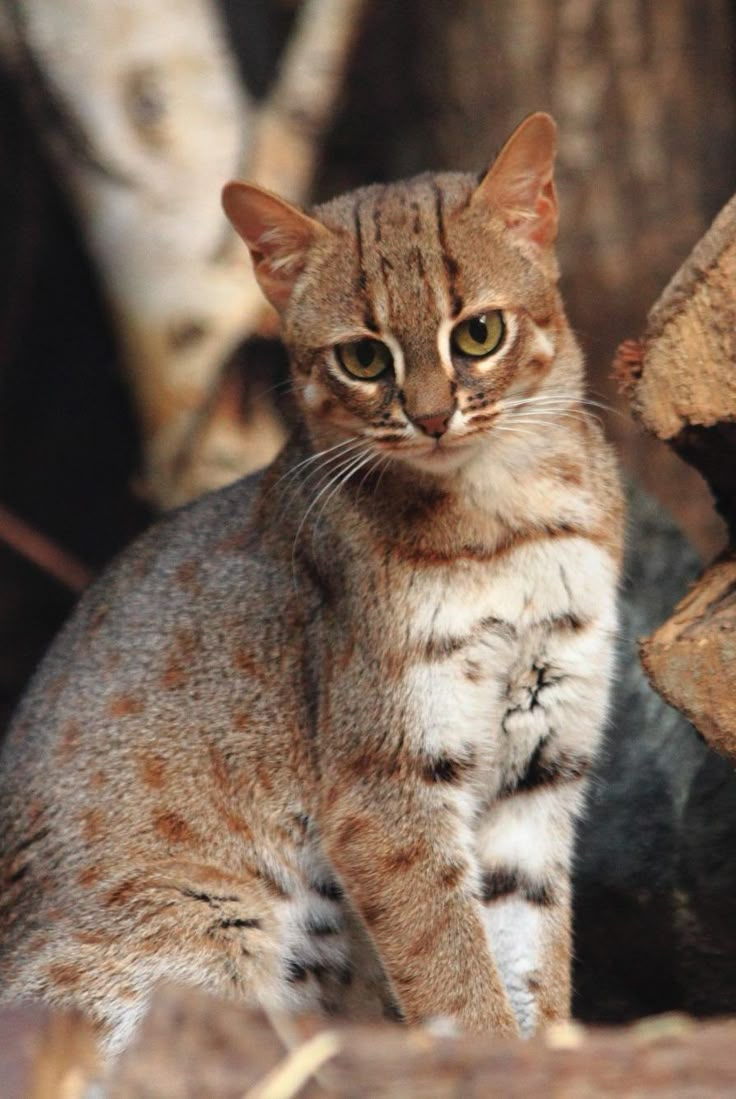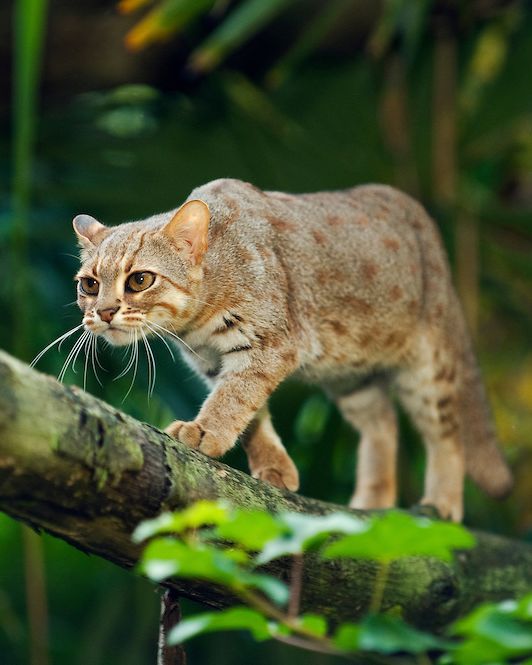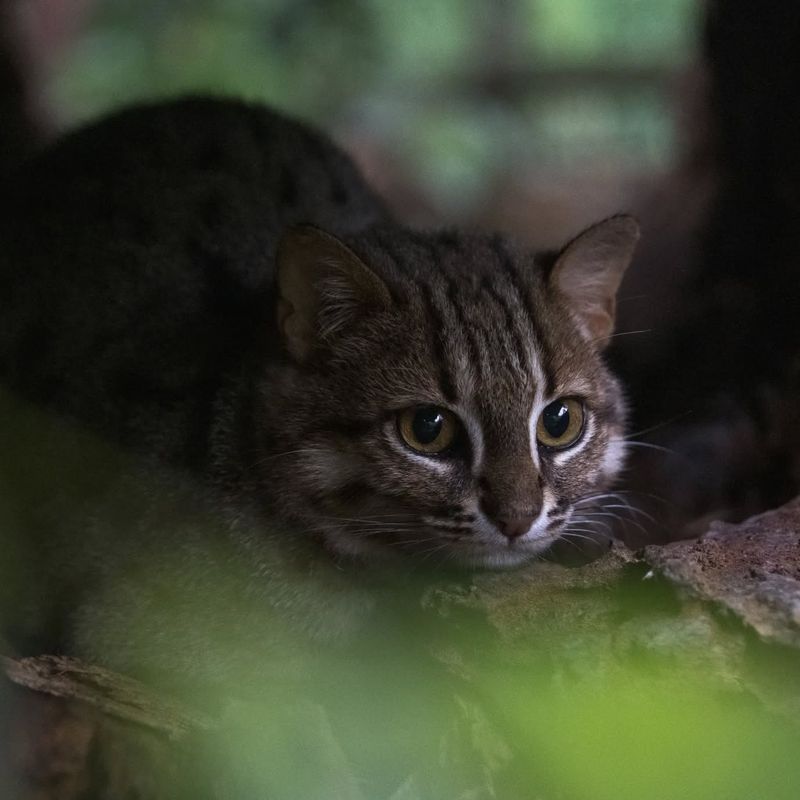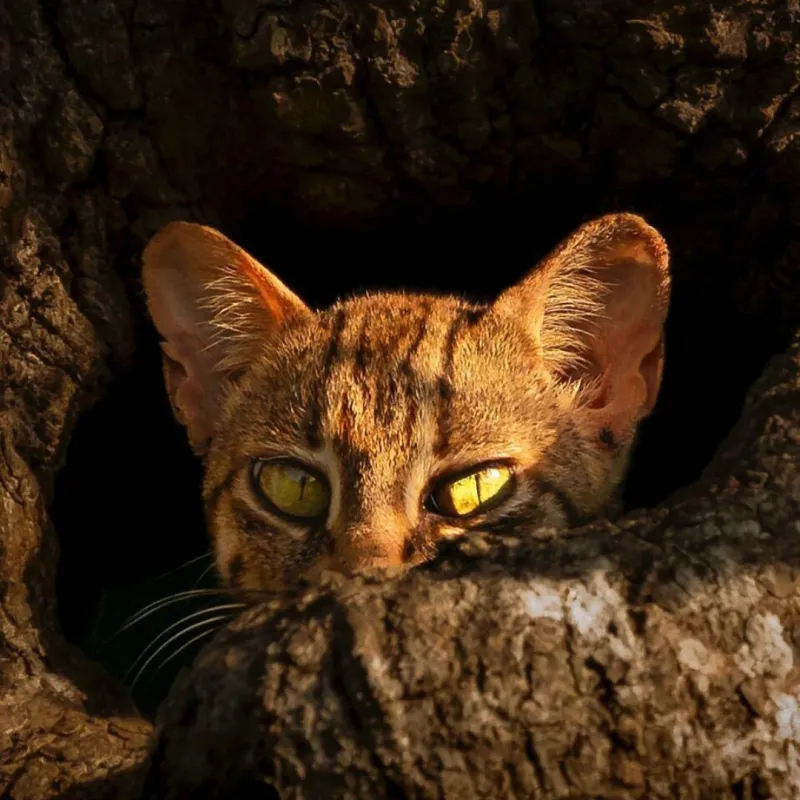📖 Table of Content:
They may look like pint-sized housecats, but don’t be fooled — the rusty-spotted cat is a wild wonder like no other. Tipping the scales at just 2-3 pounds, this elusive feline is the smallest wild cat in the world, but it comes with a personality and skill set that could rival a jungle predator ten times its size.
Native to the forests of India and Sri Lanka, these miniature marvels are cloaked in mystery, cloaked in camouflage, and packed with enough agility to rival a gymnast.
In this deep dive, we’re uncovering the secrets of this elusive cat — from their acrobatic nighttime hunts to their surprisingly complex vocal range. If you thought size was everything in the animal kingdom, the rusty-spotted cat is here to change your mind. Prepare to be charmed, amazed, and maybe even a little obsessed.
1. Tiny But Mighty Hunters
At just 14-19 inches long (including their tail), rusty-spotted cats could easily fit in your backpack! Adults typically weigh between 2 and 3.5 pounds, less than many newborn human babies.
Despite their diminutive size, these cats are skilled predators. Their diet consists mainly of rodents, birds, lizards, frogs, and insects. They can leap up to five times their body length to catch prey.
Their compact size actually gives them an advantage when hunting, allowing them to slip through dense vegetation and access tiny spaces where larger predators can’t follow.
2. Masters of Camouflage
The rusty-spotted cat’s coat serves as perfect woodland camouflage. Its fur features a distinctive pattern of rusty-brown spots against a gray or tawny background—like tiny leopard spots sprinkled across its body.
White underparts and a short, marked tail complete their distinctive look. The spots break up their outline in dappled forest light, making them nearly invisible when motionless.
Unlike domestic cats that shed seasonally, rusty-spotted cats maintain their coat year-round with minimal changes. Their fur pattern develops fully by about three months of age.
3. Night-Time Ninjas
Blink and you’ll miss them! Rusty-spotted cats are primarily nocturnal, coming alive under the cover of darkness. Their enormous eyes, proportionally larger than most cats, gather available light to navigate the night forest.
These cats can see six times better in the dark than humans. Their whiskers act as radar detectors, sensing the slightest movements in complete darkness.
During daylight hours, they typically curl up in hollow trees, dense brush, or abandoned burrows. Their secretive nature and nocturnal habits explain why they remained largely unknown to science until relatively recently.
4. Acrobats of the Forest
Rusty-spotted cats could give Olympic gymnasts a run for their money! These feline acrobats can climb vertical tree trunks with ease and navigate through branches with incredible balance.
Their lightweight bodies and powerful hind legs allow them to perform spectacular leaps. They’ve been observed jumping gaps between trees that are several times their body length.
Unlike many wild cats, they’re comfortable spending significant time in trees, often hunting, resting, and even sleeping in the canopy. Their semi-retractable claws provide a perfect grip for their arboreal lifestyle.
5. Endangered Miniatures
Despite their ninja-like stealth, rusty-spotted cats face serious survival challenges. They’re classified as Near Threatened on the IUCN Red List, with populations declining across their range in India, Sri Lanka, and Nepal.
Habitat loss is their biggest threat. As forests are converted to farmland and urban areas, these specialized cats lose their hunting grounds and denning sites.
Some are also killed by farmers protecting poultry or by larger predators like jackals. Conservation efforts focus on protecting forest corridors and educating local communities about these beneficial rodent-controllers.
6. Lightning-Fast Reflexes
Blink and you’ll miss their attack! Rusty-spotted cats possess some of the fastest reflexes in the animal kingdom. They can strike at prey in just a fraction of a second, faster than the human eye can track.
Their nervous system is wired for speed, with specialized neurons that fire more rapidly than those of larger cats. This allows them to process visual information and respond almost instantaneously.
These cats can change direction mid-leap if prey moves unexpectedly. Young kittens begin practicing these hunting moves at just a few weeks old through play, perfecting their coordination for future hunting success.
7. Mysterious Family Life
The secret family life of rusty-spotted cats remains one of zoology’s mysteries. These solitary cats typically come together only for breeding, with females raising kittens alone in well-hidden dens.
Mothers typically give birth to 1-3 kittens after a 65-70 day pregnancy. The tiny kittens weigh just 60-77 grams at birth – about the same as a chocolate bar!
Young cats develop rapidly, opening their eyes after 5 days and beginning to explore outside the den at around 4 weeks. They become independent at around 8 months, though scientists know little about their dispersal patterns in the wild.
8. Vocal Virtuosos
For such tiny cats, rusty-spotted cats have surprisingly varied vocabularies! They communicate through at least 12 different vocalizations, from gentle chirps to loud calls that can be heard over half a mile away.
During breeding season, males produce a distinctive “wah-wah” sound unlike any other cat species. Mothers and kittens maintain constant contact through soft chirping sounds that help them locate each other in dense vegetation.
They also communicate through body language, with tail positions and ear movements signaling everything from curiosity to aggression. Scent marking completes their communication toolkit, with territory boundaries maintained through urine and claw marks.
9. Adaptable Survivors
Though primarily forest dwellers, rusty-spotted cats show remarkable adaptability when necessary. Recent studies have documented them surviving in tea and coffee plantations, grasslands, and even at the edges of villages.
Their small size allows them to exploit ecological niches unavailable to larger predators. In Sri Lanka, some populations have adapted to hunt along rocky outcrops and in scrubland areas far from their traditional forest homes.
This adaptability offers hope for their future survival in a changing landscape. Conservation programs now focus on maintaining habitat mosaics that include both forest patches and compatible agricultural areas where these tiny cats can hunt.
10. Ancient Lineage, Modern Challenges
The rusty-spotted cat belongs to an ancient lineage that diverged from other cat species around 8 million years ago! They’re part of the Prionailurus genus, related to fishing cats and leopard cats.
Despite their long evolutionary history, they face thoroughly modern threats. Climate change is altering their habitat, while roads fragment their territory and lead to vehicle strikes. Illegal wildlife trade also threatens some populations.
Researchers are using camera traps and GPS collars to better understand their movements and needs. Some conservation areas now include wildlife underpasses to help these cats safely cross roads and maintain genetic connectivity between isolated populations.



